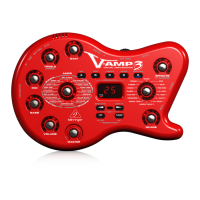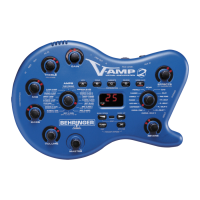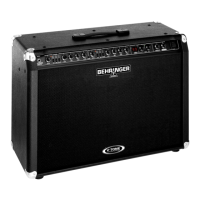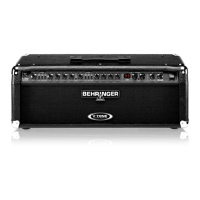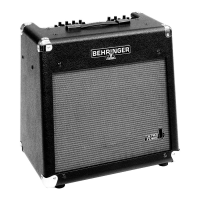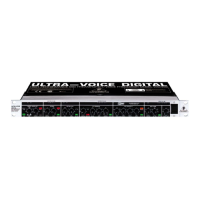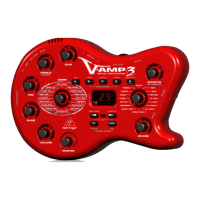19
V-AMP
Fig. 7.2: Wiring of a stereo headphones 1/4" plug
7.2 MIDI connection
The MIDI standard (Musical Instruments Digital Interface) was developed in the early 80s to enable electronic
musical instruments of different makes to communicate with each other. Over the years the range of MIDI
applications has constantly been expanded, and today it is completely normal to network entire recording
studios using the MIDI standard.
At the heart of this network we find a computer loaded with a sequencer software that controls not only the
keyboards but also effects and other peripheral devices. In such a studio you could control your V-AMP in real
time from a computer. In particular, when playing live gigs you can use a MIDI foot controller to control both the
effect parameters and preset/bank changes on your V-AMP.
The MIDI connectors on the rear of your V-AMP are internationally standardized 5-pin DIN jacks. To connect
your V-AMP to other MIDI equipment, you need dedicated MIDI cables, which are commercially available in
various lengths.
MIDI IN: receives MIDI controller information. The receiving channel can be adjusted in SETUP mode by
pressing the A button; then, adjust the parameter with the arrow keys.
MIDI OUT: the MIDI OUT allows you to send data to a computer or other devices connected. Your V-AMP
transmits both preset data and parameter changes.
7.2.1 Sending/receiving MIDI data
Your V-AMP can receive system-exclusive data from other MIDI devices, provided that you have the MIDI
function (button A) activated in SETUP mode. However, all presets will be overwritten automatically. You can
transmit MIDI data from your V-AMP to other devices (total dump), by entering SETUP mode and pressing
the MIDI button until the display reads d. This function may be useful e.g. to store preset edits not in the
V-AMP but on an external sequencer.
You can also send single preset to other device: Enter SETUP mode by pressing both arrow keys, activate the
MIDI function and briefly hit the MIDI button.
7. INSTALLATION
